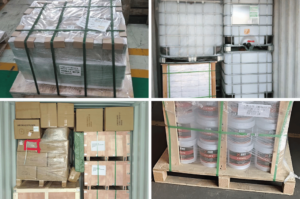In recent months, Ukraine has witnessed a significant surge in grain exports, reaching pre-invasion levels, largely due to the success of its newly established maritime export corridor. This development follows the cessation of the UN-mediated Black Sea Grain Initiative by Russia. Ukraine initiated a humanitarian corridor in August to connect its Black Sea ports with the international market, despite Russia’s threats to target vessels in the area.
To avoid direct routes through international waters, ships now navigate closer to the coastlines of Ukraine and NATO countries like Romania, Bulgaria, and Greece, under the protection of the Ukrainian Navy. This route, sailing through NATO waters, offers additional security without the need for the extensive inspections previously mandated by Russia.
Ukraine’s strategic use of drones and the recapture of strategic locations have enabled the launch of this new route. Insurance policies underwritten in London, offering substantial coverage for each voyage, have made this corridor more attractive to shipowners, reducing sea freight costs significantly.
As of early February, Ukraine’s grain exports for the 2023-24 marketing year totaled 25.2 million tonnes, slightly down from the previous year but including a notable 1.3 million tonnes this month alone. This includes shipments from Black Sea ports, Danube River ports, and land routes, with January exports surpassing those of the previous two years.
Chornomorsk, Odesa, and Pivdennyi ports led in January’s exports, contributing significantly to the total agricultural exports. However, exports via smaller Danube ports and by train have seen a decline.
Despite the challenges, Ukraine’s grain and oilseed production has remained robust, with corn and wheat as the leading crops. The USDA has adjusted its export estimates reflecting the corridor’s success, though challenges like the Red Sea shipping crisis pose potential obstacles, particularly affecting exports to Asia. This situation might influence export demand from Asia in the first half of 2024 and impact European markets.








